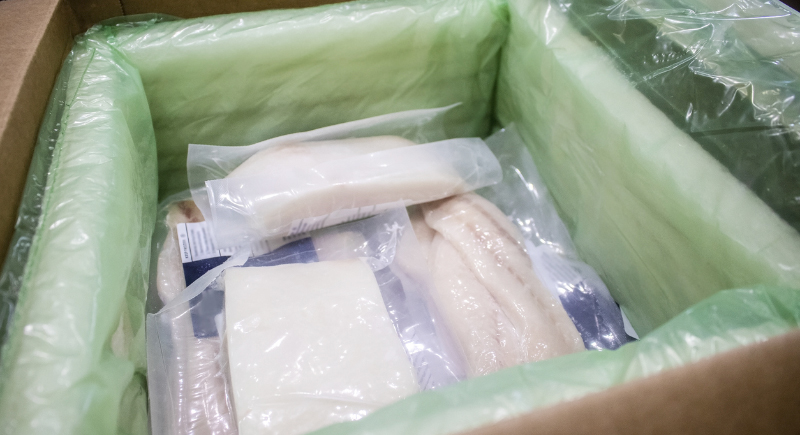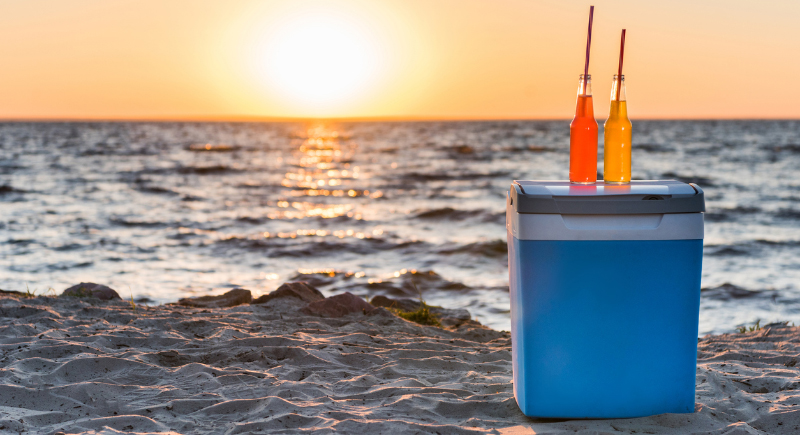How Long Can Food Really Last in a Cooler?
People rely on coolers for all kinds of reasons, such as road trips, camping, tailgates, grocery runs, or power outages. They keep food cold when a refrigerator isn’t available, but their usefulness has limits. Once the ice begins melting or the temperature inside rises, food safety declines quickly. The main question is how long food remains safe to eat in a cooler before bacteria start to grow.
Temperature Controls Everything

Image via iStockphoto/Susan Vineyard
The U.S. Department of Agriculture defines the “danger zone” for food safety as between 40°F and 140°F. In that range, bacteria grow rapidly. Keeping the cooler below 40°F is essential because once it warms beyond that point, spoilage starts to happen fast. Food that stays above 40°F for more than two hours, or for one hour if it’s hotter than 90°F outside, should be discarded. It might look or smell fine, but harmful bacteria don’t always change how food appears.
Microbiology experts emphasize that what matters most is the cooler’s internal temperature, not the outside air. A properly packed cooler filled with enough ice can maintain safe temperatures for many hours — and sometimes even several days — depending on the insulation, how full it is, and how often it’s opened. When exposed to high heat or direct sunlight, cooler performance drops faster, but the critical two-hour rule applies only once the food or cooler temperature rises above 40°F; after that, perishable items must be discarded.
How Long Common Foods Stay Safe
How long food lasts in a cooler also depends on what you pack. Fish, poultry, and ground meat are the most perishable and should be eaten or thrown away within one to two days if they stay cold the entire time. Steaks and chops hold up for about three or four days.
Cooked meats, bacon, and cured deli items can last about a week as long as the cooler remains cold enough. Dairy products have different timelines. Milk stays good for two or three days in a properly packed cooler, while cheese, yogurt, sour cream, and cream cheese can last close to a week.
Eggs can stay fresh for up to two weeks if kept dry and chilled, and butter lasts for at least a week. Fruits and vegetables vary as well. Soft fruits like berries or peaches spoil after a day or two, while firmer produce such as carrots, cabbage, and cucumbers can last about a week. Apples and citrus fruits stay fresh for nearly a month, even with minimal refrigeration.
Keeping The Cooler Cold For Longer

Image via iStockphoto/LightFieldStudios
A properly packed cooler makes all the difference. Chill the cooler before using it, then layer the bottom with ice or frozen gel packs. Place raw meats at the bottom in sealed containers to prevent leaks. Put cooked food and ready-to-eat items on top, then drinks and snacks last, or better yet, in a separate cooler.
Opening the lid repeatedly lets warm air in and shortens how long the food stays safe. Fill any empty space with more ice or non-perishable food to hold in the cold. A full cooler maintains its temperature better than one that’s only half filled.
If you’re away for several hours or days, replace melting ice as needed and check the temperature with a food thermometer. The key to preventing bacterial growth is keeping it below 40°F for the entire time.